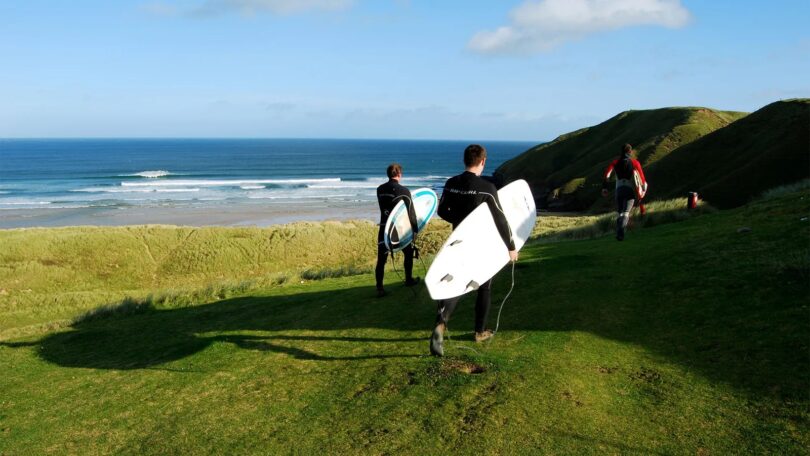Mike MacEacheran
Thurso, the northernmost town on mainland Britain, is believed to have been named by the Vikings, meaning “Thor’s River” in Old Norse.
Seen on a map, it unspools north from Loch Rumsdale through Caithness’ salmon country before rushing headlong into the North Atlantic, where its arrival helps foreshadow an unlikely alliance between man and the ocean. At this intersection of land and sea, the swell generates powerful, barrelling waves, which break heavy and fast over a kelp-covered reef.
Once, the bay was the beginning of a new world for the Vikings, who arrived, blown from swirling wave to wave, carrying raven banners (totemic flags bearing the birds of the god Odin) to Britain’s shores. But today, Thurso East is home to a different sort of seafaring adventurer: Scotland’s cold-water surfers – and their number is swelling.
One such local obsessive is Scottish National Surfing Champion Mark Boyd, who has called Thurso home for the past 15 years. He migrated north from Sandend on the Moray Firth Coast in the mid-2000s and, when he’s not competing around the globe, he can be spotted out in the surf, dressed in a thick neoprene wetsuit and ink-black hood as armour against temperatures dipping as low as 7C.
With a bit of imagination, in the smirr of a gloomy autumn day, his outfit recasts the Scotland surf team captain as a “selkie”– a Scottish mythological creature that shape-shifts between human and seal forms.
“We’ve the perfect storm of conditions here, at least for those in the know,” explained Boyd, who also works as sports operation manager for the Scottish Surfing Federation. “The coastline is open to giant depressions that leave us on the receiving end of huge swells, while the north-facing prevailing winds groom the waves, creating world-class breakers. Surfing isn’t in our DNA or mainstream consciousness yet though, but this is changing.”
That sense of being carried by the ocean – to float on it as if levitating – is a feeling Boyd has grown up with in northern Scotland. But it is one that is increasingly being felt across his homeland.
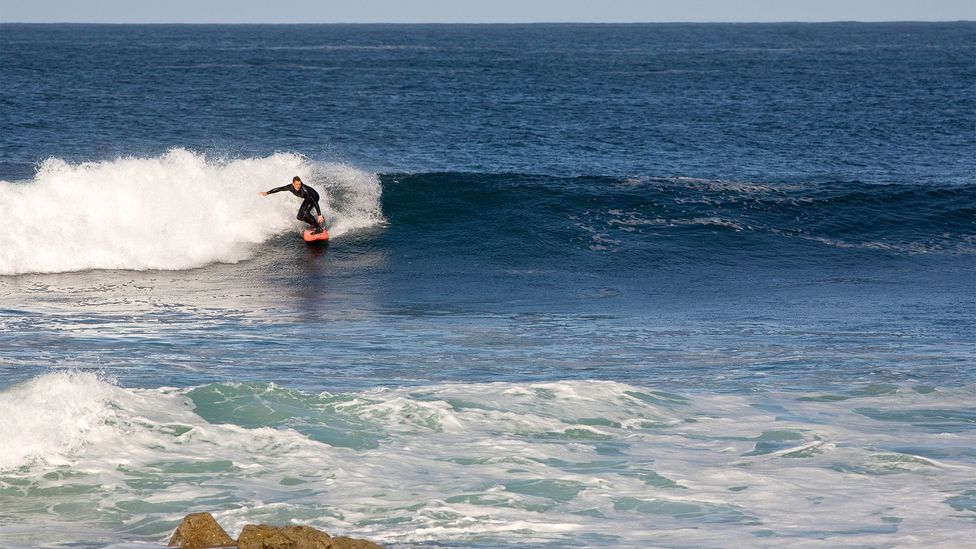
In Scotland, wild weather and big waves go hand in hand (Credit: Arnold Media/Getty Images)
In recent weeks, videos of surfers catching thrashing waves along the coast, from Thurso to Fife to Portobello near central Edinburgh, have offered a window on the world of this Scottish wave craze. The first named storms of autumn – Storm Agnes and Babet – brought days of heavy, persistent and widespread rain and sustained winds gusting over 58mph. Disruption reigned along the northern and eastern seaboards, but after the stormbound days the coast was transformed into a portrait of paradise – a boon for local surfers. Like all fanatics, they know wild weather and big waves go hand in hand, with recent swells averaging around 13-20ft (4-6m) and peaking at 30ft (10m).
Part of Scotland’s appeal lies in its unbridled coastline and, at times, the heroic challenges of surfing here. Unlike the waves of California, Indonesia or Australia, which can be crowded as a result of their own surf legends, the coastline of Scotland largely remains unmapped for today’s boarders.
At least, this is the viewpoint of Sam Christopherson, owner of Coast to Coast Surf School in Dunbar in East Lothian. “It’s so empty,” he said. “Every time I surf elsewhere, I’m reminded how wonderfully deserted our coast is. But with a little imagination, you can find good waves anywhere here.”
Like Boyd, Christopherson can sense a sea change in the domestic surf scene, describing it as “the Canaries or Hawaii of cold-water surfing”. He believes, like others on the surf landscape, that the search for waves in parallel with the advancement of wetsuit technology have helped move the compass needle north.
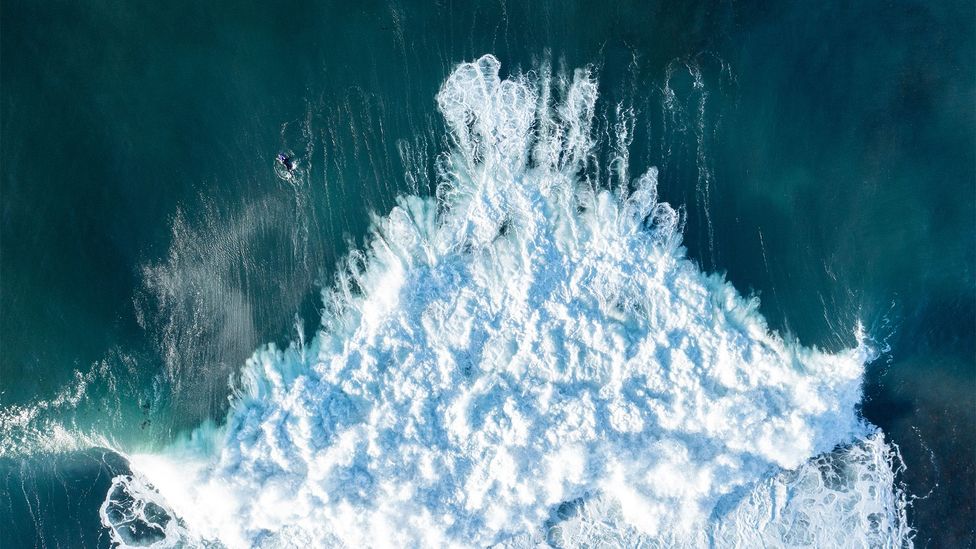
Recent swells in Scotland have averaged around 13-20ft (4-6m) and peaked at 30ft (10m) Credit: Lewis Mackenzie Photography/Getty Images)
“Cold-water surfing is booming right now, and surfers are increasingly travelling here to catch big waves with the sport moving on from board shorts and warm seas,” added Christopherson. “I’ve surfed in Thurso East’s when the wave’s been five times over my height – scary as hell.”
It wasn’t long ago that if the 50-year-old told a friend he was going surfing, their first instinct would be to think it impossible. This was in the late 1980s when the instructor first learnt in Pease Bay, less than an hour’s drive from Edinburgh. A decade later, friends would then shake their head and call him crazy. “Now, it’s where can I?” he said. At the latest estimates, there are now up to 100,000 surfers in the country.
To help document this unlikely evolution, a new book by veteran surfers Malcolm Findlay and Andy Bennetts titled Surfing Scotland has also been published this month to chart the past 60 years.
The biggest news of all though is yet to come. Consider that Edinburgh is soon to be home to Europe’s largest inland surf destination, and you can start to understand the logic that the country might one day become a cold-water seventh heaven.
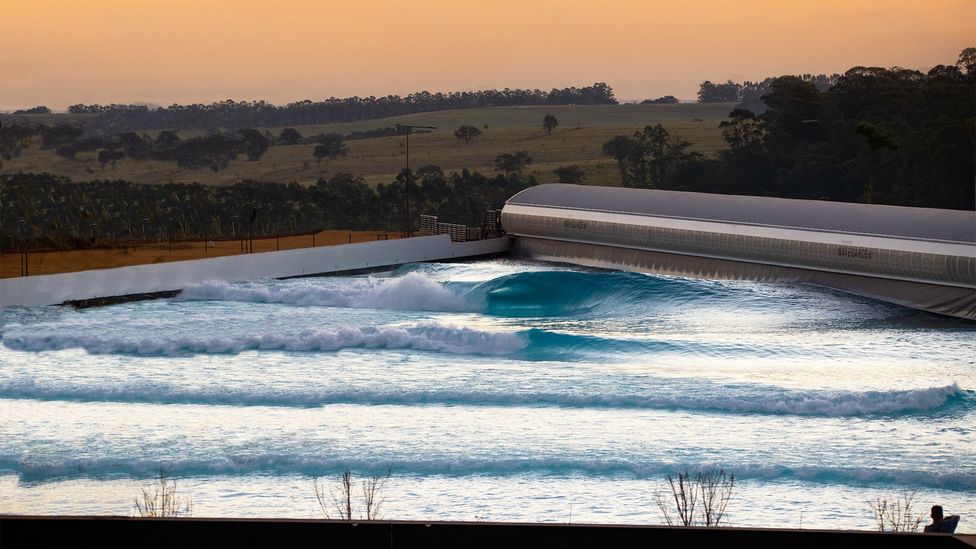
The Lost Shore Surf Resort will open around a manmade lagoon in London (Credit: Lost Shore Surf Resort)
Next September, the £55 million Lost Shore Surf Resort will open around a manmade lagoon three times the size of Wembley Stadium in London and one that’s able to produce 1,000 waves an hour at the touch of a button. Located next to the Edinburgh International Climbing Arena in Ratho, hiding only five miles from Edinburgh International Airport, it’s being talked up as a game changer for anyone eager for a taste of the surfing life – however diluted the experience may feel compared to the rawness of the moshing North Sea.
The pitch, according to Andy Hadden, founder and managing director of the resort, is one of the most consistent surf breaks in the world. For surfers of old, the technical blueprint of a 52m module wave garden cove might be hard to take, but the reality is somewhat different, as the success of other artificial surf pools in Bristol in England, Melbourne in Australia, Sion in Switzerland, Siheung in South Korea and Itupeva in Brazil have shown.
In the ocean, the average surfer catches three to four waves an hour, with each ride lasting six to seven seconds. The manmade waves rolling across 60 acres outside Edinburgh, however, will last 13 seconds longer.
“We believe Scotland can become the ‘brain’ of the cold-water surfing industry.”
“We believe Scotland can become the ‘brain’ of the cold-water surfing industry,” said Hadden. “We’re not just puffing our chest out. We’re studying the mechanics of surfing, the sustainability of wetsuits, investing in research on many fronts.”
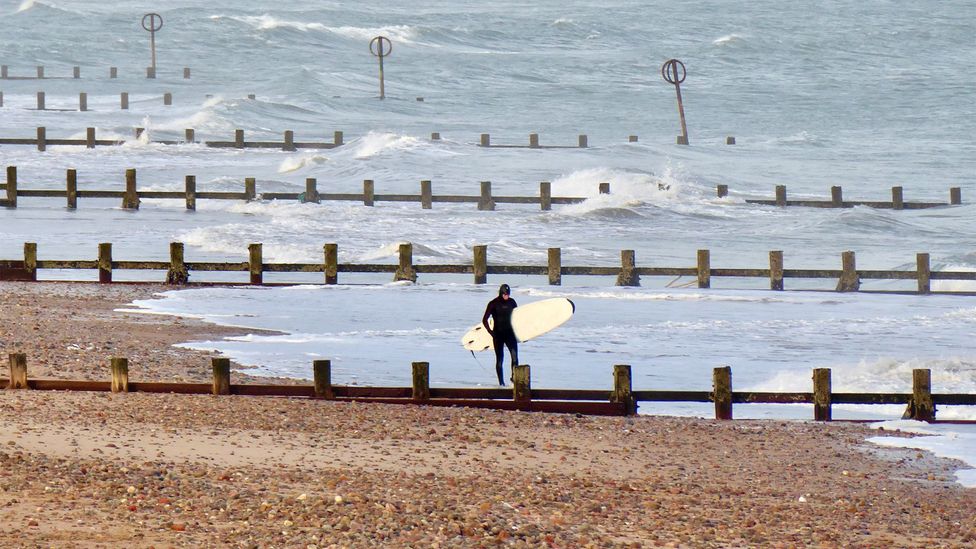
Cold-water surfing has become popular in Scotland in recent years (Credit: Margaret LN Brooks/Getty Images)
Of particular pride for Hadden is Surf Lab, an alliance with nearby Edinburgh Napier University that will undertake specialised research – already it has funded the world’s first surf therapy PhD on the same campus. Besides that, Lost Shore will be the first to have a surf school offering courses in meditative surf therapy.
“It’s a little bit like the accomplishments of the Scottish Enlightenment,” added Hadden. “At least, that’s how I see the future.”
Whatever that might be, and whatever people say or think, it’s unlikely the scene in Scotland will return to what it once was: days of fickle surf and frigid bones. And this sentiment is one VisitScotland, the country’s national tourism organisation, agrees with.
“Our coastline has a wealth of opportunities to catch waves, from Coldingham Bay in the Scottish Borders to Lewis and Harris in the Outer Hebrides, and, of course, Thurso in the Highlands,” said Cat Leaver, head of brand and global marketing (this is her official title). “So, it’s not surprising surfers are seeing Scotland as a go-to destination. Prior to the pandemic, trips consistently grew each year. And with water wellness an ongoing trend, no doubt some of those visitors will have gone surfing.”
The call to surf is real, then. With Scotland’s storm-ridden coast a place to come and ride marbled blue waves, watch the sea suck and wheeze with orchestral intensity, and wonder, if just for a moment, that this might be the start of some kind of endless summer.
Courtesy: BBC

